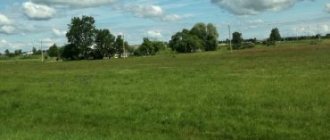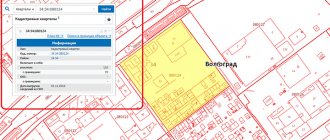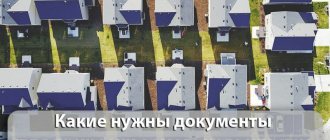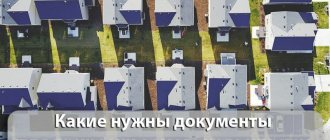Land and plot of land
Earth in a broad, global, so to speak, sense can be called the planet on which we live, the entire world around us with its diverse landscape, inhabited by plants and animals, including humans. However, from such an interpretation it does not follow how a person can use it in economic activity, as well as the forms and methods of using the land.
Therefore, we will narrow the concept in relation to human activity, the emergence and termination of land ownership and other legal relations. In Land Law, land is understood as the surface of our planet and as a natural resource that is used in the national economy. (Land law .1.1.) Minerals are extracted from the depths of the earth, construction and agricultural work are carried out on its surface.
It is clear that not all of the land as a whole is used on the farm, but its individual parts, allotments, plots.
A land plot is understood as a part of the surface that has a location, status, area, and is included in the Unified State Register and Cadastre. There are two types of plots; indivisible and divisible. An indivisible plot is a plot that cannot be divided without losing its properties. For example, his appointments. Divisible, accordingly, is an area whose parts retain their properties after division.
Forest area
The Forest Code (Chapter 1, Article 7) states that land plots are the same as forest plots. A unilateral transaction is carried out by the decision of one party. This could be making a will.
The Constitution states that land is considered public property. A plot of land may belong to a specific person. It will become real estate after registration and receipt of a cadastral number. After this, you have the right to perform various actions - sale, rental.
As an object of real estate
Article 11 of the Constitution of our country states that land is public property. At the same time, it can be in state or municipal or private ownership.
Above, we have already given a definition of the concept of a land plot; it remains to add that a plot can become a piece of real estate when it is registered, has a number and goes into circulation. In other words, it can be sold, bought or alienated in any other way. It should be noted that in Russia there are two types of land. These are lands that do not enter into circulation, that is, they are not the subject of a transaction, and lands that enter into circulation, becoming an object of real estate.
Entering into circulation, the land plot acquires value and becomes a commodity, i.e., it becomes possible to make transactions with it.
A constitutional norm that defines this or that property as public property imposes certain restrictions on the owner’s right to dispose of this property. In this case, the plot of land should be used only for its intended purpose. For example, if a site is intended for construction, then it should be used for these purposes.
In order for a plot to become real estate, in addition to its value, it must also have some other characteristics.
Identification features
The characteristics that define a site as real estate include:
- cadastral number;
- numbers of each part of the site. The legal regime of each part is also indicated;
- site address;
- the area of the site itself and each part of it;
- details of the owner, proprietor;
- if there is, then details of the owners of each part of the site;
- structures located on the site, their area;
- boundaries of the site, each part;
- its purpose;
- site status.
Is it possible to change the target purpose?
The legislation of Russia and Ukraine provides for the possibility of changing the category of purpose for using a land plot.
To initiate this process, the owner must submit a package of documents (application, copy of passport and code, certified photocopy of the act of ownership and basis), on the basis of which a land development project will be developed to change its intended purpose.
However, before you start doing this, it is worth discussing with a lawyer whether it is even possible to achieve your goal.
So, for example, many residents of megacities are not able to purchase their own housing there because of its high cost. Therefore, they resort to tricks, buying dachas on the outskirts. In the future, people plan to transfer these areas from gardening to residential use. It really can be done. However, if such a dacha is not included within the boundaries of any settlement, the law does not provide for the possibility of changing its target category to individual residential development. And then its owner will de facto live in his own dacha with all the amenities, but de jure he will not be able to register there or receive any benefits from the state.
As an object of evaluation
All land that is used in the national economy can be considered as a financial instrument that generates a certain income. At the same time, they consider it as a separate plot of land and as part of a real estate property, i.e. together with the buildings, structures, etc. located on it.
The site is assessed taking into account the use of the land:
- for the extraction of mineral resources and minerals;
- for agriculture;
- forestry;
- as a space for the development of the economic and social sphere;
- to shape the environment in which the population lives;
- environmental safety.
Personal farming
What is a plot of land for private farming? This is an area for planting a garden, vegetable garden, and growing agricultural plants. The construction of objects is not prohibited, and there is no need to obtain a construction permit. But if the land is located in one locality, permission can be obtained. If the site is located outside the boundaries of the settlement, then a residential building can be erected on it, but registration there will not be possible.
The concept of one-sided transactions
When making a unilateral transaction with any type of real estate, including plots of land, a decision of one party is sufficient. One type of such transaction is the execution of a will. Several people can be recognized as one party, for example, when drawing up a power of attorney for the sale of a plot that is in their common ownership.
You can familiarize yourself with the concept of “land plot” in the Land Code here.
Categories of allotments by intended purpose
Having understood the defining characteristics, it is worth considering the typology of land plots.
According to their intended purpose, 7 categories (types) are distinguished. In Ukrainian legislation - 9.
- Agricultural.
- Land plots allocated for the location of a settlement (or an entire region).
- Territories belonging to the forest fund.
- Lands of the country's water fund.
- Areas used for industrial/energy/transport/communication/defense needs. This category also includes plots allocated for spaceports, etc.
- Specially protected areas.
- Reserve lands.
On the territory of Ukraine there are also plots intended for health institutions and having historical and cultural significance. And instead of reserve lands (they are not owned by anyone), in this country there is a category of recreational areas. “Orphaned” areas do not have a category, but are evenly distributed among others.
Limitations on turnover
This concept implies the possibility of alienation or transfer from one person to another. And restrictions mean that for some reason the land is limited in use or withdrawal from circulation. Such property cannot participate in transactions for the provision of private property. This applies to areas:
- protected area;
- forest fund;
- municipal territories;
- for communications and defense needs.
The entire list of restrictions is specified in the Land Code of the Russian Federation (Article 27).
Specifics of legislation
Federal Law No. 66 regulates the procedure for the provision and zoning of lands intended for summer cottage and gardening use. The norms also establish the rules for the formation of non-profit associations. The Law reflects the principles of regulation and management, establishes the obligations and rights of participants, and the specifics of privatization of plots. The Federal Law does not allow changes in the intended purpose and type of use of these lands when carrying out transactions with them.
There are no criteria in the regulatory legal acts for assessing the sanitary condition of the local area of the house
On the second day of the online seminar, the Chairman of the Board of the P1 Association, the head of RosKvartal, Boris Valit, focused on practical topics related to the land plot under an apartment building. We have sorted out:
- who should maintain the roads;
- what are the requirements for MSW accumulation sites;
- how to install a barrier and road signs in the yard;
- how to take part in the national project “Comfortable Urban Environment”.
You can learn briefly about these topics from the demo video:
Watch the demo on the YouTube channel of the P1 Association ➡️
One of the questions that Boris Valit considered was whether there are any criteria for assessing the pollution of the local area. They are not established by law. The regulations stipulate only the requirements for the composition, frequency and order of work for the proper maintenance of local areas.
The expert cited regional practice as an example - decision of the Tver City Duma dated October 16, 2014 No. 368. Clauses 6.140–6.145 of this document state how often the yard should be cleaned and its sequence.
First, they clean the sidewalks, then the pedestrian paths and courtyard areas. Cleaning, except for snow removal, which is carried out during snowfalls, is carried out until 13.00. When manually clearing sidewalks and internal driveways, snow must be removed completely, under a scraper. In the absence of improved coatings, the snow is removed under the engine, leaving a layer for subsequent compaction.
Based on this, we can conclude that if the territory is not cleaned according to the standards established in this document, then it can be considered contaminated. To avoid this, the management company and the homeowners association must carry out all work prescribed by law in full, within the specified time frame or at the established frequency. There are no other criteria for assessing the quality of work performed.
Is it possible to place commercial objects in the local area?
Ways to increase value
The value of the site can be increased through the following actions:
- by annexing an ownerless site to your own (this option is possible after contacting the municipal authority to which such territory belongs);
- alignment of allotment boundaries;
- changing the configuration of the site;
- taking advantage of the opportunities provided by landscape design;
- laying utility lines;
- ensuring the availability of all necessary documentation for the site;
- landscaping.
Cost
The cost of appraisal work may vary significantly depending on the following factors:
- area of the site being assessed;
- location of the land plot;
- a list of work that needs to be performed by the appraiser;
- the amount of state duties or the organization’s prices, if the assessment was ordered from a legal entity.
In general, in the territory of the Russian Federation, the cost of an assessment starts from 2 thousand rubles, and the period of work usually does not exceed 5 working days (if there is no need to request additional documentation).









